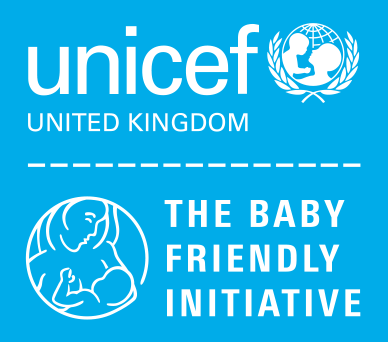These studies explore infant nutrition and growth.
An investigation into the current practice of preparing, handling and reconstituting powdered infant milk in the domestic setting in Ireland
The aim of this study was to determine the current practice of reconstituting PIF in the domestic setting in Ireland. A sample of parents with a child aged 0–12 months (n = 228) completed a 30-item questionnaire online. Most respondents were first time parents (55%), female (89%), aged 25–44 years (99%) and educated to tertiary level (79%). Results revealed that 64% (n = 146) of respondents reported to fill the kettle with one litre of fresh tap water, but less than half (45%) follow the guidance, to cool the boiled water to the required 70C. The majority 91% (n = 208), stated that they discard any unused feed within two hours. Furthermore, 29% (n = 67) of respondents reported to use an automatic bottle preparation machine, 75% (n = 171) said they are aware of safety aspects/risks associated with preparing PIF and most (97%, n = 221) felt confident in their ability to safely prepare their infant’s PIF feed.
WHO Guideline for complementary feeding of infants and young children 6–23 months of age
This documents offers a comprehensive update to WHO Guideline in two decades on complementary feeding of infants and young children 6-23 months of age. Includes responsive feeding as a key recommendation.
Available here: https://iris.who.int/bitstream/handle/10665/373358/9789240081864-eng.pdf?sequence=1
First‐food systems transformations and the ultra‐processing of infant and young child diets: The determinants, dynamics and consequences of the global rise in commercial milk formula consumption
This article addresses how the inappropriate marketing and aggressive promotion of breastmilk substitutes undermines breastfeeding and harms child and maternal health in all country contexts. The study describes trends and patterns in global formula sales volumes (apparent consumption) by country income and region. Data are reported for 77 countries, for the years 2005–19, and for the standard (0–6 months), follow‐up (7‐12 m), toddler (13‐36 m), and special (0‐6 m) categories. Second, it draws from the literature to understand how transformations underway in first‐food systems – those that provision foods for children aged 0–36 months – explain the global transition to higher formula diets.
Use and understanding of labelling information when preparing infant formula: Evidence from interviews and eye tracking
This article examines the risks associated with incorrect preparation and storage of infant formula, including microbiological hazards and aims to increase understanding of how Australian caregivers perceive, interpret and use mandatory and voluntary “on-pack” label information when preparing and storing infant formula. Findings from the study show the need for clearer and more noticeable mandated food-safety elements on infant formula products.
Two studies released by the World Health Organization (WHO)/Europe found that a high proportion of baby foods were incorrectly marketed as suitable for infants under six months of age. Findings from four cities found that 28-60% of foods were marketed as being suitable for infants under six months and in three cities over half of all products provided 30% of calories from total sugars. WHO maintain their recommendation of exclusive breastfeeding for six months and reference the 2016 global Guidance on Ending the Inappropriate Promotion of Foods for Infants and Young Children which stipulates that “commercial complementary foods should not be advertised for infants under six months of age.” The study further explores the steps taken by WHO to combat inappropriate promotion of certain foods, including the Nutrient Profile Model (NPM) for children aged six to 36 months and a WHO/Europe-developed methodology that identifies commercial baby foods in retail settings and collects information from packaging and promotion.
A longitudinal study of estrogen-responsive tissues and hormone concentrations in infants fed soy formula
This study in Philadelphia compared estrogen-responsive postnatal development in infants exclusively fed soy formula, cow-milk formula, and breast milk. Researchers found that relative to girls fed cow-milk formula, those fed soy formula demonstrated tissue- and organ-level developmental trajectories consistent with response to exogenous estrogen exposure. They suggested that further studies are needed to further evaluate the effects of soy on child development.
Holding infants can affect their genes: Epigenetic correlates of neonatal contact in humans
This study found that children who had had less physical contact and were more distressed as infants had a molecular profile in their cells that was underdeveloped for their age. The effect was detectable four years later, suggesting that touch in infancy has profound effects. The research builds on similar work in rodents, highlighting the importance of tactile contact for biobehavioral outcomes via the modification of DNA methylation (DNAm). Our standards help units to give parents every opportunity to touch and care for their babies, supporting their development and future relationships.
Moore, SR, et al (2017), Epigenetic correlates of neonatal contact in humans, Development and Psychopathology, https://doi.org/10.1017/S0954579417001213
Read more analysis of this study: http://www.med.ubc.ca/holding-infants-or-not-can-leave-traces-on-their-genes/
Older research
- SACN report on Feeding in the First Year of Life: https://www.gov.uk/government/publications/feeding-in-the-first-year-of-life-sacn-report
- O’Brien, E, et al (2016). The portrayal of infant feeding in British women’s magazines: a qualitative and quantitative content analysis. Journal of Public Health, doi: 10.1093/pubmed/fdw024
- Hieke, S, et al (2016). Prevalence of Nutrition and Health-Related Claims on Pre-Packaged Foods: A Five-Country Study in Europe. Nutrients, DOI:10.3390/nu8030137



